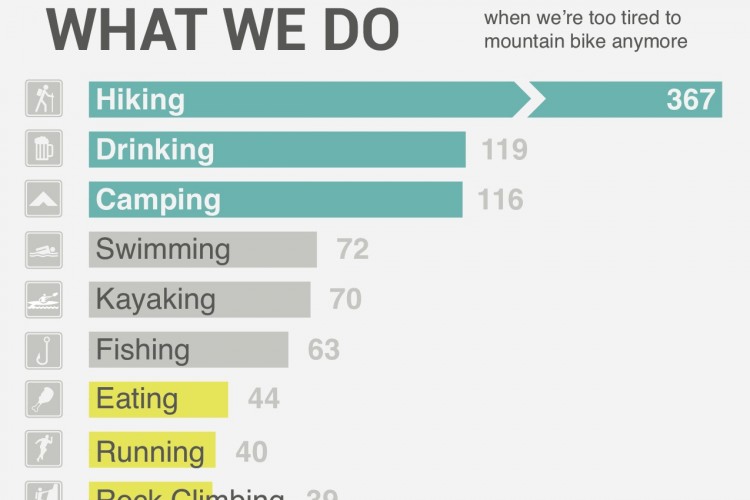This should come as no surprise but here it is: Fat biking is addictive.
We received nearly 1,000 survey responses from dozens of countries and 49 of the 50 US states on the topic of fat bikes. We covered a lot of ground, so here’s the executive summary.
There is a ton of interest in fat biking, even in places where snow and sand are scarce. Survey respondents skewed toward riders who already own fat bikes or are considering buying fat bikes but even among those with no intention of buying a fat bike, 71% at least want to give it a try.
Fat biking is addictive. Sixteen percent of fat bike owners own more than one and, on average, fat bike owners ride their fat bikes 76 times a year. Potential fat bike buyers estimate they’ll only ride 37 times a year, so there must be something about getting a fat bike.
First mover advantage is huge in this market. We’ve seen this play out to a degree with other mountain bike trends (29ers, for example), but in fat bikes, the most popular brands are those who got the wheel rolling in the first place. Surly and Salsa are still big favorites among consumers, and smaller brands are still holding onto some of the top spots despite inroads by megaliths like Trek and Specialized.
Fat bike fanbois. I say this in the most respectful way, but it really does seem the fat bike’s capabilities have been oversold to a degree. Consider this series of responses to the survey (not included in the infographic):
About 60% of the respondents say fat bikes provide excellent handling on everything from rocks to hardpack to mud. At worst, 5% say their fat bikes handle poorly in rocky conditions. It’s actually hard to draw a conclusion about which conditions fat bikes are optimized for from these charts–it looks like fat bikes are great at everything!
Ok, now it’s your turn. What jumps out at you from these numbers? For those who want to dive even deeper, we’ve also made much of the raw survey data available here.
Convinced you’re ready to take the plunge? Read fat bike reviews here.























10 Comments
Feb 11, 2014
Feb 13, 2014
Feb 12, 2014
Feb 11, 2014
Feb 11, 2014
Second is, why would someone own two fatbikes? This doesn't make a lot of sense to me. I currently have a trail bike and am building a fully rigid singlespeed. If I wanted another bike, I wouldn't buy another trail bike or singlespeed since I already have one of them. I would love to hear from someone who owns two to see why.
Feb 11, 2014
Feb 11, 2014
Feb 11, 2014
You also raise a good question: why would someone own more than one fatbike, especially since 96% of fat bikes owned are rigid? Would love to hear from someone who owns more than one...
Feb 11, 2014
Feb 11, 2014
I've observed all of these things happening to one friend or another of mine... and sometimes both at once! I just saw that a friend who owned a pretty standard Mukluk just purchased a blinged-out Ti 29+, which is a VERY different bike, and yet is classified as a "fat bike" by most.